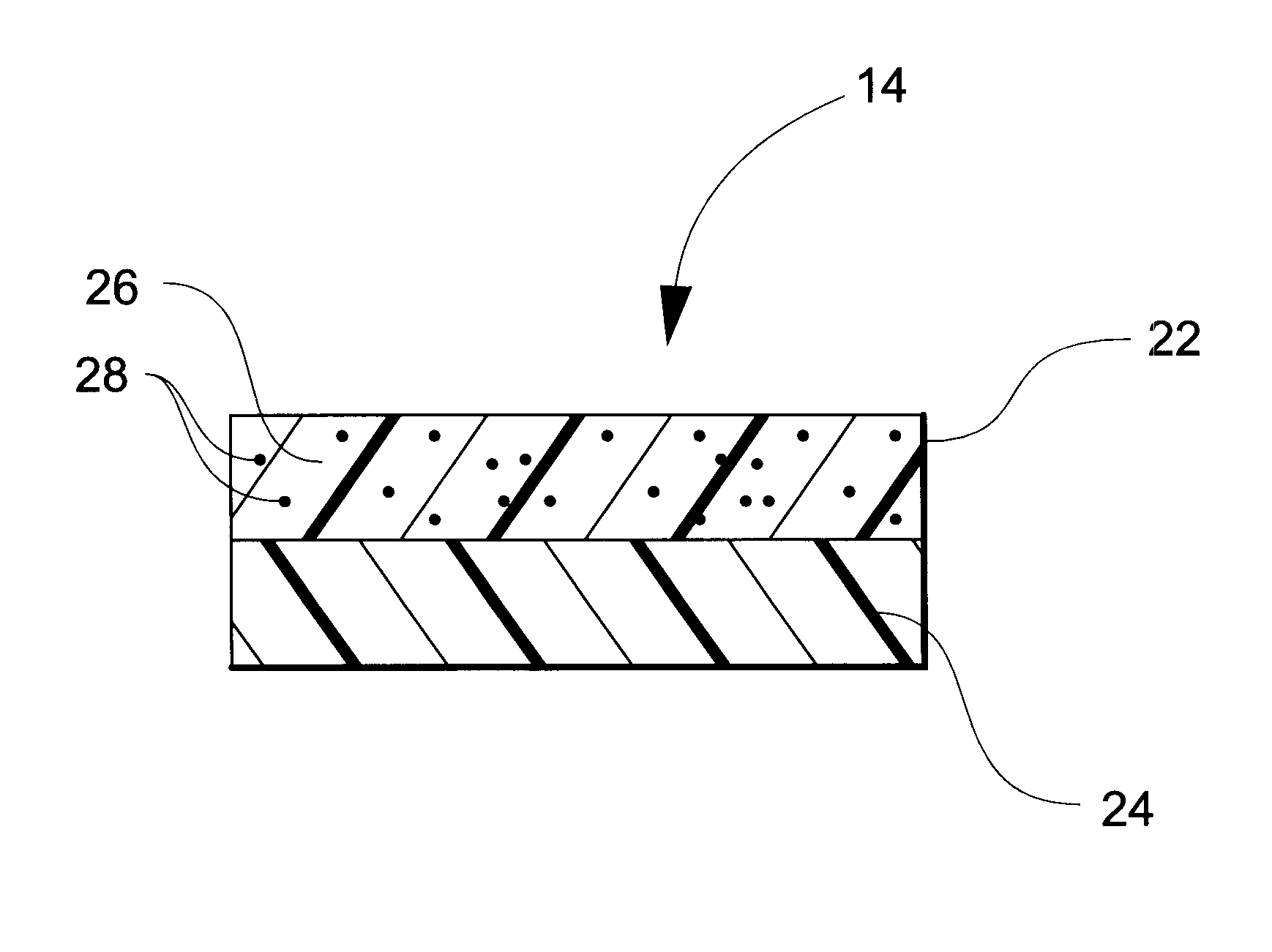Separator for a high energy rechargeable lithium battery
a lithium battery and high energy technology, applied in the field of separation of high energy rechargeable lithium batteries, can solve the problems of high resistance of the severity of the problem with the above-mentioned high energy anodes is much greater, and the commercial success of lithium metal or lithium alloy batteries has eluded all but primary cells, so as to improve the conductivity and reduce the resistance
- Summary
- Abstract
- Description
- Claims
- Application Information
AI Technical Summary
Benefits of technology
Problems solved by technology
Method used
Image
Examples
Embodiment Construction
Sixty (60) parts of fine particle calcium carbonate, 40 parts of PVDF:HFP (Kynar 2801), are dissolved in 100 parts of acetone at 35.degree. C. for 3 hours under high shear mixing. The solution is cast into a 15 micron film. After vaporization of the actone at room temperature, the composite film was thermally laminated with 2 layers (8 microns) of Celgard 2801 membrane. The resulting composite shutdown separator has a structure of PE / composite / PE and a thickness of 30 microns.
Thirty (30) parts of silicon dioxide, 30 parts of calcium carbonate, 40 parts of PVDF:HFP (Kynar 2801) are dissolved in 100 parts of acetone at 35.degree. C. for 3 hours under high shear mixing. This solution was cast or coated onto a 23 micron layer of a polyethylene microporous layer made by Celgard Inc. After vaporization of the acetone at room temperature, the polyethylene / composite membrane had a thickness of 38 microns.
The present invention may be embodied in other specific forms without departing from th...
PUM
| Property | Measurement | Unit |
|---|---|---|
| pore size | aaaaa | aaaaa |
| porosity | aaaaa | aaaaa |
| particle size | aaaaa | aaaaa |
Abstract
Description
Claims
Application Information
 Login to View More
Login to View More - R&D
- Intellectual Property
- Life Sciences
- Materials
- Tech Scout
- Unparalleled Data Quality
- Higher Quality Content
- 60% Fewer Hallucinations
Browse by: Latest US Patents, China's latest patents, Technical Efficacy Thesaurus, Application Domain, Technology Topic, Popular Technical Reports.
© 2025 PatSnap. All rights reserved.Legal|Privacy policy|Modern Slavery Act Transparency Statement|Sitemap|About US| Contact US: help@patsnap.com


